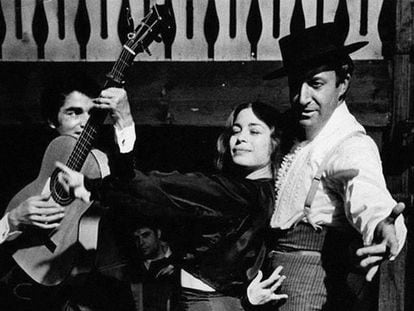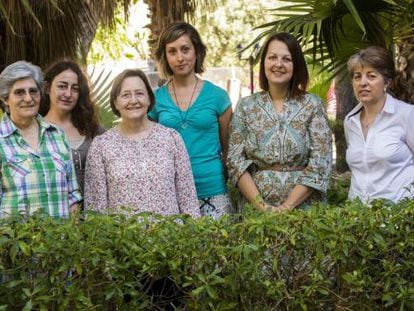In Spain’s Jerez de la Frontera, flamenco zambombas make a comeback
The celebration dates back to the 18th century, nearly died in the 1970s, and is enjoying a revival


Fire, flamenco and local sherry wine – the Andalusian city of Jerez de la Frontera (Cádiz) is ready for revelry. While the rest of Spain may consider a zambomba no more than a rustic musical instrument, in Jerez the word has a much richer meaning. Here and in neighboring Arcos de la Frontera, a zambomba is defined as a popular Christmas tradition, celebrated around a fire in a courtyard or on the street, to carols sung by flamenco singers and with typical dishes from the region. During the Christmas season there are plenty of zambomba celebrations across town.
The zambomba is participatory by definition. Even the most tame and timid take part
Commercial director of Atalaya Museum Miriam Morales
It’s an old tradition dating back to at least the 18th century that has experienced a big comeback in the last few years, and was even added to Spain’s cultural heritage list (BIC) in 2015. Now the Jerez branch of the Podemos political party has asked the Royal Spanish Academy (RAE) to recognize the tradition and to include the local and festive definition of the word in its dictionary.
In the courtyard outside the Atalaya Museums, a towering 19th-century palace that has almost 300 period clocks on display, the bells strike two in the afternoon. Wicker chairs are gathered around a bonfire, and a selection of liqueur wines, Ibérico cold cuts and Christmas sweets are on offer. Everything is ready for the zambomba held by the Andalusian Institute of Flamenco (IAF) to celebrate two years since the tradition was declared a BIC. The smell and the heat of the fire provide comfort against the midday cold, but soon it won’t be needed.
“The zambomba is participatory by definition. Even the most tame and timid take part in it,” says Miriam Morales, commercial director of the Atalaya Museums.

But for the magic to happen, the efforts of flamenco artists like Pepe Alconchel, Alberto Sánchez, Agustín Caracolillo de Paterna and Juan Diego de Luisa are crucial. These are some of the people who lend their musical power to this Christmas celebration, which grew from small gatherings in the residential courtyards shared by locals in Arcos and Jerez. Today, the guitarist Juan Diego strives to rescue old romances (Spanish poems with eight syllables to a line) and Christmas carols, preserved through oral history, so he can put them to music and sing them. “The origin of all this is in Arcos, where we used to sing romances. With time, Gypsies in the poor quarters of Jerez adapted the lyrics to flamenco,” says De Luisa shortly before the performance.
De Luisa’s repertoire includes songs about Baby Jesus becoming drunk from the fruit of the strawberry tree and others on love affairs and quarrels. “Like all good popular traditions, these twists and turns of the Spanish picaresque genre [relating to roguish heroes who outwit their corrupt, upper-class foes] come out in the songs,” says Mari Ángeles Carrasco, director of IAF.
Zambombas were on the point of disappearing in the 70s but have made a big comeback
The IAF has fought to “protect and conserve” zambombas, which were on the point of disappearing in the 1970s. Indeed, the decree from the Culture Council which recognized zambomba as an important cultural heritage, defines the tradition as an “authentic ritual” which mixes different flamenco palos or styles, from bulerías to rondas and more. Today, with the celebration back in force in Jerez and beyond, the challenge is not so much quantity but quality.
The group led by Pepe Alconchel has already performed 35 times this Christmas, including last Saturday’s performance at IAF. They began performing in mid-November and will continue until Christmas Eve. More than 30 zambombas took place just last weekend, with most organized by small flamenco associations and restaurants.
“It is a cultural industry that is already being exported elsewhere in Andalusia,” says local Podemos member Manuel Ruiz, who holds a PhD in history and is campaigning for the RAE to broaden its definition of zambomba.
English version by Melissa Kitson.












































